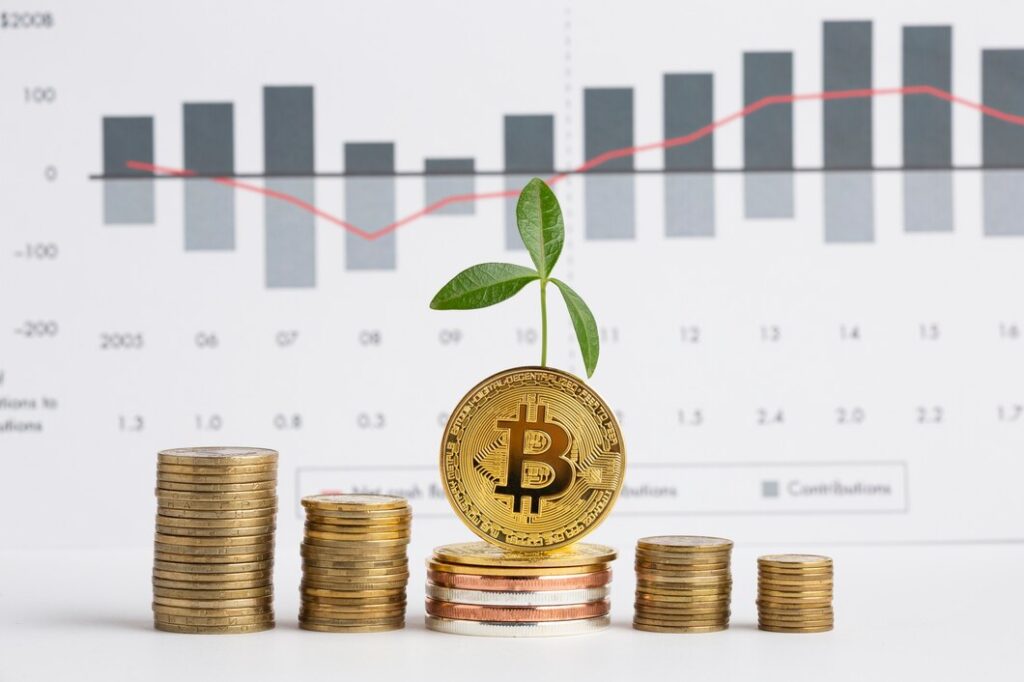
Regulatory oversight of the cryptocurrency industry continues as we completely enter into 2024.
The crypto market suffered a great deal last year, to put it mildly, from the SEC going after celebrities like Lindsay Lohan and Jake Paul who promoted cryptocurrency assets to the historic Sam Bankman-Fried trial.
A CertiK analysis estimates that $2 billion was lost in the cryptocurrency space in 2023, leading to a continued fight against scams and fraud in the industry through 2024.
It is inherent to the crypto realm that there are weaknesses. Being vigilant about any opportunity that is provided is important at every stage, from initial information to actual transactions, even though trying to recover your money after falling for a scam is very tough.
Basic tips to avoid scams

1. Think twice about the big profit promises
Investing in cryptocurrencies is risky by nature, and con artists frequently take advantage of people looking to make easy money. Promises of unreasonably large returns, double investments, or free money are used by scammers to lure victims. Before making any investment, treat such statements with caution and make sure you’ve done your homework.
2. Scrutinised all emails and messages
Communication methods featuring typos, grammatical mistakes, or inconsistent language are frequently used by scammers. Genuine entities consistently communicate in a polished and error-free manner.
3. Stay clear of transactions with unclear details
Reputable investment offers give precise details about projected returns and how money will be used. On the other hand, scams frequently lack precision and clarity.
4. Manipulation tactics screening
To trick people, con artists may employ coercive methods like extortion or offer contracts that appear to be enforceable. Examine all contractual duties carefully, and be on the lookout for attempts at coercion or threats. This also holds when texting someone you don’t know in private.
5. Have a second thought about celebrity endorsements
Take the time to confirm an endorsement’s legitimacy if it seems strange or out of place. Genuine recommendations are usually consistent and well-documented since influencers are usually picky about the ventures they support.
Why the market matters in cryptocurrency
More and more unskilled traders will jump on every asset that becomes accessible as the market grows increasingly positive. Cryptocurrencies saw a comeback in 2023, with notable gains seen in popular tokens like Ethereum and Bitcoin.
The graph below, which correlates scam income with Bitcoin prices in 2022, illustrates how scams typically make less money during downturns in the cryptocurrency market, according to research conducted by Chainalytics.
Over the year, scam revenue virtually precisely mirrors variations in Bitcoin’s price, with price fluctuations always occurring three weeks after income fluctuations. Not all unique scam types, though, follow this pattern; for example, some scam types observe a rise in revenue changes in tandem with a decline in the price of crypto assets.
Because of its tremendous liquidity, Bitcoin was the preferred cryptocurrency for cybercriminals in 2021. However, within the past two years, there has been a change, with stablecoins now accounting for the majority of volume in illicit transactions.
Whether or not the cryptocurrency market recovers in 2024, it is reasonable to predict that con artists will continue to refine their methods. Here’s a quick glance, Flare price prediction as of today, is predicted to drop by -7.17% and reach $ 0.029612 by February 17, 2024. The most popular kinds of plans in 2024 are listed here.
Pump and dump Crypto scams
There will be a greater number of people searching for high-yield prospects when market sentiment is positive. A group of people conspire to raise the price of a recently established cryptocurrency (pump and dump) and then swiftly sell it off (dump) to benefit.
This act in cryptocurrency is known as a pump-and-dump scam. Chainalysis reported in 2022 that about 24% of new coins in the year were founded on pump-and-dump scams.
Six ways on how pump and dump scams happen in Cryptocurrency:
- Fraudsters buy a less well-known coin when it’s cheap.
- Making people excited about crypto, usually on social media, makes it look like a great investment.
- Others decide to join the craze and buy crypto in the hopes of making money.
- Investing more into it makes the crypto more expensive.
- When it reaches a certain amount, that’s when the scammer sells all of their crypto and makes a profit.
- Buyers who buy when the price is high lose money when it drops quickly.
AI scams in Cryptocurrency
Scammers now have more advanced tools to trick people thanks to the rise of AI. Virtual assistants and chatbots that are powered by AI can sell fake tokens, help with pump-and-dump schemes, or give bad business advice. There were more and more deepfake video ads last year, and this will continue through 2024.
Fraudsters often use photos and videos of famous people made by AI to promote fake cryptocurrency projects, using deepfake technology. People watch fake deepfake videos that claim to double their cryptocurrency investments by scanning QR codes.
By hacking YouTube access tokens, attackers can quickly change feeds to look like real people and send people to malicious websites that promote crypto-doubling scams. The newest example is a deepfake video of Anatoly Yakovenko, co-founder of Solana, giving something away with a QR code that goes to a phishing site.
Additionally, the Commodity Futures Trading Commission (CFTC) has recently warned of scams that use AI to offer big profits through crypto arbitrage algorithms. Scammers take advantage of the growing use of AI in this case by making false promises about big profits. Several fraud plans were found by the CFTC. One of them led to the loss of 30,000 Bitcoins, which is about $1.7 billion.
Pig butchering in Cryptocurrency
According to various assessments, the Pig butchering scam method is one of the most recent and successful scams of 2024. Pig butchering, also known in local parlance as “romance scams,” is a fraud where victims are tricked into handing over precious cryptocurrency assets by manipulating their emotions. These scams, which usually start on dating apps or social media, employ a protracted tactic to trick victims into sending money with cryptocurrency or investing in dubious ventures.
How then does it operate? In essence, con artists fabricate an online persona complete with a seductive photo, strike up casual chats with their targets, and then change the subject to investments and persuade them to register for an account at a recommended online brokerage. Take caution to avoid being duped by these clever strategies.
It has been reported that one of the most common frauds in the cryptocurrency ecosystem is pig butchering. However, because pig slaughtering is typically underreported, it can be difficult to find specific data on recent fraud counts. Often, victims are reluctant to come forward because of the shame they feel for falling for this specific fraud.
Investment scams in Cryptocurrency

Scams involving cryptocurrency investments seem to be here to stay. Lloyds Bank released research in 2023 indicating a 23% increase in investment scams. Unlike more established financial markets, these frauds prey on gullible investors by taking advantage of the decentralized and loosely regulated character of the cryptocurrency market.
Scammers frequently lure their victims with the promise of rapid profits by making extravagant and guaranteed returns on investments. It’s critical to understand that most investment scams are opaque about how money is spent and the fundamental workings of the investment. Valid projects offer comprehensive details regarding their objectives, technology, and personnel.
A look at the reported biggest Cryptocurrency scams in history:
| The Cryptocurrency Company | Estimated losses reported by losers | The year the scam happened |
| OneCoin | $25 Billion | 2016 |
| FTX Trading LPlusTokenLtd. | $8 Billion | 2019-2022 |
| PlusToken | $4 Billion | 2018-2019 |
| BitConnect | $2 Billion | 2016-2018 |
| BitClub Network | $772 Million | 2014-2019 |
Phishing scams in Cryptocurrency
Phishing is still a common problem because con artists use phony emails and links to phony websites in an attempt to obtain personal data. For example, new and deadly phishing designs have recently been used to attack MetaMask, Blockstream, and Trezor.
According to data, there is a growth in approval phishing techniques, with wallets being taken for at least $374.6 million in 2023. Con artists entice victims to approve fraudulent blockchain transactions, allowing the perpetrators to spend particular tokens from the victim’s wallet.
Spenders frequently move money to another wallet. The pattern where the authorized spender starts the draining transaction must be identified to detect this fraud; additional research is necessary for validation.
Double scams in Cryptocurrency
As more investment scams result in court convictions, other con artists take advantage of the victims’ need for healing. The increase in “double scams” makes cryptocurrency fraud more intricate. A second wave of scams targets victims: companies posing as recovery agents would pay fees to restore lost assets.
The majority of the time, fraudulent recovery agents commit advanced fee fraud by collecting money for services that never were provided. As scammers sell the victims’ personal information, they become more vulnerable to constant harassment and extortion efforts. Crypto double frauds make it harder for victims to confess fraud, which leads to isolation and prevents friends and family from learning about the scam.
What is the key to avoiding scams in Cryptocurrency?
In the world of cryptocurrency trading, risk is a necessary component. Because cryptocurrency transactions are irreversible and very decentralized, there are a lot of weaknesses in the system. After a crypto scam, recovering money becomes an impossible task. The greatest self-defense strategies are to be alert at all times, recognize scams before they happen, and proceed with caution.
Read Also:






